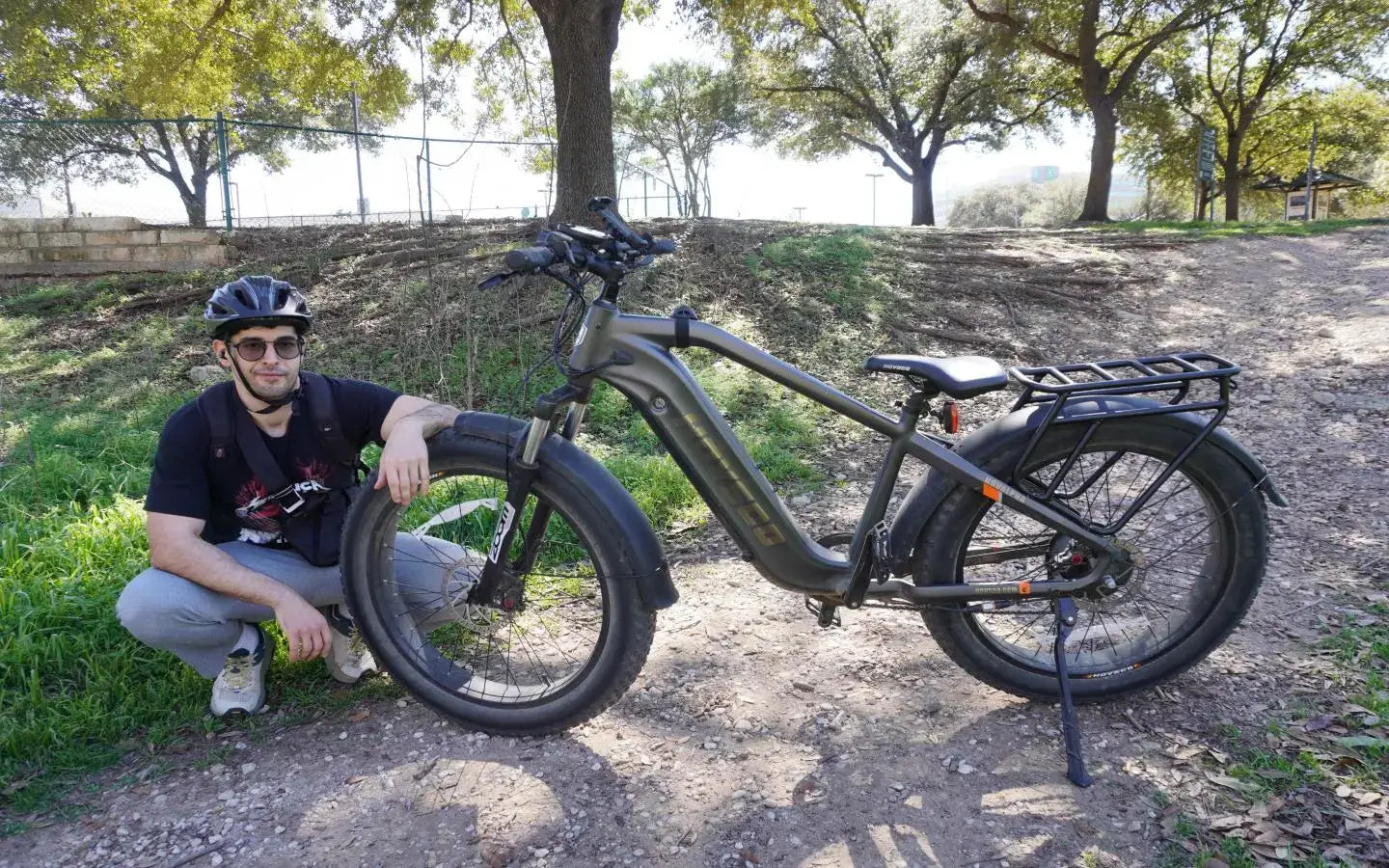
- by LiuJiazhu
Do Electric Bicycles Significantly Reduce Carbon Footprint?
- by LiuJiazhu
Electric bicycles significantly reduce carbon footprint by emitting far less CO2 per kilometer than cars and public transport. They combine human power with electric assistance, resulting in emissions as low as 13 grams of CO2 equivalent per kilometer, compared to over 90 grams for electric cars and more for gasoline vehicles. This makes eBikes a highly effective sustainable transport option that cuts carbon emissions while maintaining mobility. Why Choose Electric Dirt Bike For Off-Road?
Electric bicycles produce an average of 13 grams of CO2 equivalent (CO2e) per kilometer over their lifecycle—including manufacture, use, maintenance, and disposal—while conventional bicycles emit slightly less at 10-12g CO2e/km. In contrast, electric cars average around 90g CO2e per passenger-kilometer, and gasoline cars emit substantially more. Public transportation typically ranges between 68-176g CO2e per passenger-km, making eBikes the lowest carbon option among motorized transport modes.
Chart: Average CO2 Emissions per Passenger Kilometer
| Transport Mode | Average CO2 Emissions (g CO2e/km) |
|---|---|
| Electric Bicycle | 13 |
| Conventional Bicycle | 10-12 |
| Electric Car | 90 |
| Gasoline Car | 104 |
| Bus | 68 |
Replacing car trips with electric bicycle rides can reduce individual transportation carbon footprints by up to 50%, with potential national-level reductions of millions of tonnes of CO2 annually. In England, for example, eBikes could cut car CO2 emissions by about 30 million tonnes per year if widely adopted. The greatest impact occurs in rural and suburban areas where car dependency is higher, enabling substantial carbon savings by shifting travel modes.
The carbon footprint of electric bicycles depends partly on the electricity mix used for charging. Regions relying on renewable energy sources have lower associated emissions, while areas dependent on fossil fuels see higher CO2e per kilometer. However, even with the "dirtiest" electricity profiles, eBikes maintain a significant carbon advantage over cars, as their overall energy consumption is minimal.
Beyond slashing CO2 emissions, electric bicycles improve urban air quality by reducing pollutants like nitrogen oxides and particulate matter. They also decrease noise pollution and reduce traffic congestion, contributing to healthier and more livable cities. Additionally, eBikes encourage active transportation, promoting public health benefits while lowering environmental impacts.
Several factors affect the carbon footprint of eBikes, including battery production and disposal, manufacturing processes, rider behavior, and travel distance. High-quality batteries with longer lifespans and efficient recycling reduce environmental impact. Furthermore, eBike usage intensity—how often and how far they are ridden—directly influences per-kilometer emissions, with more frequent use spreading the manufacturing footprint over greater distances.
When choosing an electric bicycle to maximize carbon footprint reduction, consider models with high-quality, long-lasting batteries and efficient motors to extend range and minimize energy consumption. Opt for eBikes from trusted brands like HOVSCO that prioritize sustainable materials and safety. Assess your typical travel distances and local electricity sources to select a model that fits your lifestyle while ensuring environmental benefits. Investing in maintenance and proper battery recycling further enhances sustainability.
“Electric bicycles represent a pivotal shift toward sustainable transportation by drastically lowering carbon emissions compared to traditional vehicles,” explains a HOVSCO sustainability engineer. “Our commitment is to develop eBikes that not only reduce environmental impact but also encourage healthier, more active lifestyles. By integrating advanced battery technology and durable components, we aim to extend the lifecycle of each eBike, maximizing carbon savings. The future of urban mobility depends on embracing these efficient, low-emission solutions.”
Q: How much carbon dioxide does an electric bicycle emit compared to a car?
A: An electric bicycle emits about 13 grams of CO2 equivalent per kilometer, while cars emit over 90 grams per passenger-kilometer, making eBikes far cleaner.
Q: Can electric bicycles replace cars for most trips?
A: Yes, especially for short to medium distances and in suburban or rural areas, eBikes can replace many car trips, significantly reducing carbon emissions.
Q: Does charging an eBike with coal-powered electricity negate its environmental benefits?
A: Even with coal-powered electricity, eBikes emit less CO2 per kilometer than cars due to their high energy efficiency, though using renewable energy maximizes benefits.
Q: What maintenance practices help reduce an eBike’s carbon footprint?
A: Regular battery care, timely servicing, and proper recycling of components reduce environmental impact and extend the eBike’s useful life.
Q: Are electric bicycles beneficial for urban air quality?
A: Yes, by replacing motorized vehicles, eBikes reduce pollutants and noise, improving overall urban air quality.
Share:
Which Electric Bikes Have Removable Batteries For Easy Charging?
Which Electric Bikes Have Removable Batteries For Easy Charging?